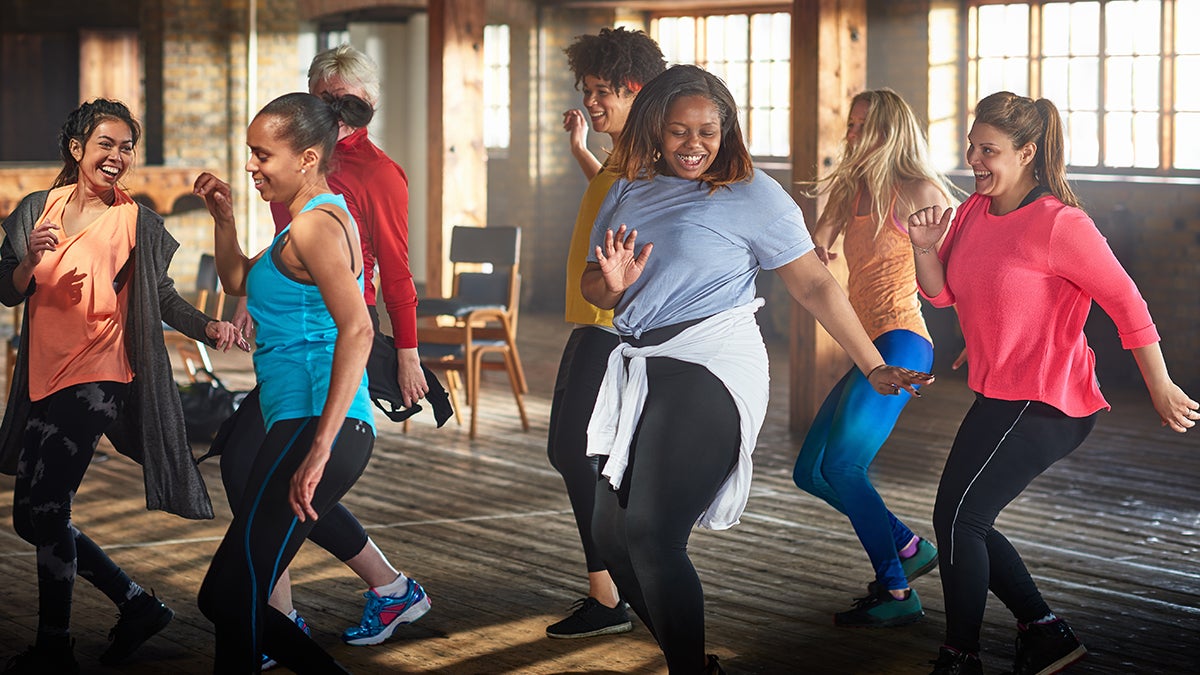Less stress, diverse exercises highlight the benefits of group workouts

What’s more beneficial: training by yourself or training in a group?
A study says that working out in a group is the better option, lowering stress while meeting the exercise criteria. With research done by The Journal of the American Osteopathic Association, group exercisers in a group saw lower stress levels and a higher quality of life.

The study divided a group of 69 participants into three different groups, one that participated in a group fitness class, one that exercised alone or with up to two people regularly, and a control group that did not exercise regularly.
The results showed that the fitness class group saw much lower stress levels and high fitness/mental quality of life (QOL) over the course of the 12-week testing period. The other two groups saw no significant changes in quality of life or lower stress levels over the same testing period.
Stress was measured by having subjects complete the Perceived Stress Scale (PSS) once every four weeks during the 12-week session. QOL surveys were distributed to the participants weekly, and they were asked in a variety of questions to rate their physical, mental and emotional QOL on a scale of 0-10.
The most well known group-workout method, Crossfit, encourages group workouts. Trainers change workouts from day to day, and encourage positivity through the workouts from the other participants. They want everyone to experience their workouts.
There are several factors that go into making a group workout successful. Are trainees going to motivate other members of the group to be better? Is one more likely to wake up to an early alarm clock for a group workout over a personal workout?
Dian Griesel, co-author of TurboCharged, told to NBCNews about the benefits of group training.
“Working out with a crowd carries a plethora of intertwined benefits that include enhancing consistency, duration, motivation, conversation and inspiration,” she said.
“Workouts with others improve consistency because they involve a commitment. ‘No shows’ and cancellations get noticed by others and positive peer pressure can help curtail the urges to skip a workout … or quit.”
Working out in a group also encourages trainees to work out longer than they would by themselves. A study done by the Journal of Sport and Exercise Psychology tested this, having participants performing a series of planks both alone and with a partner.
The partner’s performance was always manipulated to be better than the test subjects. The study found that the subjects planked longer on average with a superior partner than by themselves.
Safer and more diverse workouts are available when working out with more than one person, according to John Ford, the head trainer at JFK Health and Fitness.
“Having spotters to make sure that you’re performing an exercise correctly and can do said exercises to failure in a safe manner,” Ford told NBCNews. “In some instances, having a partner can even help you do exercises that you couldn’t do on your own. Think partner assisted pull-ups.
Ford added that group environments help diversify workouts.
“There are so many fun fitness moves that require having a partner or multiple partners,” he said. “Just try doing medicine ball toss sit-ups by yourself. It can make you feel really lonely in a hurry. Having multiple people around can really open up a creative catalog of exercises: from partner resisted moves to relays, the options are plentiful and fun.”
TJ Mathewson is a senior sports journalism student at Arizona State University
Related Articles
Study shows evolution of fitness training from functional to high tech
Studies show staying active key to successful aging
Endurance training can significantly impact diabetics
High school P.E. course can lead to 'Fitness for Life'
Gym class, recess can be critical learning components for children
Studies: Children on autism spectrum could benefit from sports activities
What is causing inactivity in the U.S.?
How is the U.S. choosing to get active?
Sports drink or water? Well, that depends
Can health apps motivate people to exercise more?
Virtual reality takes you out of the gym to improve workouts
Playing Teen Sports May Protect From Some Damages Of Childhood Trauma
More than 1 in 4 people across the world don’t get enough exercise, study says

